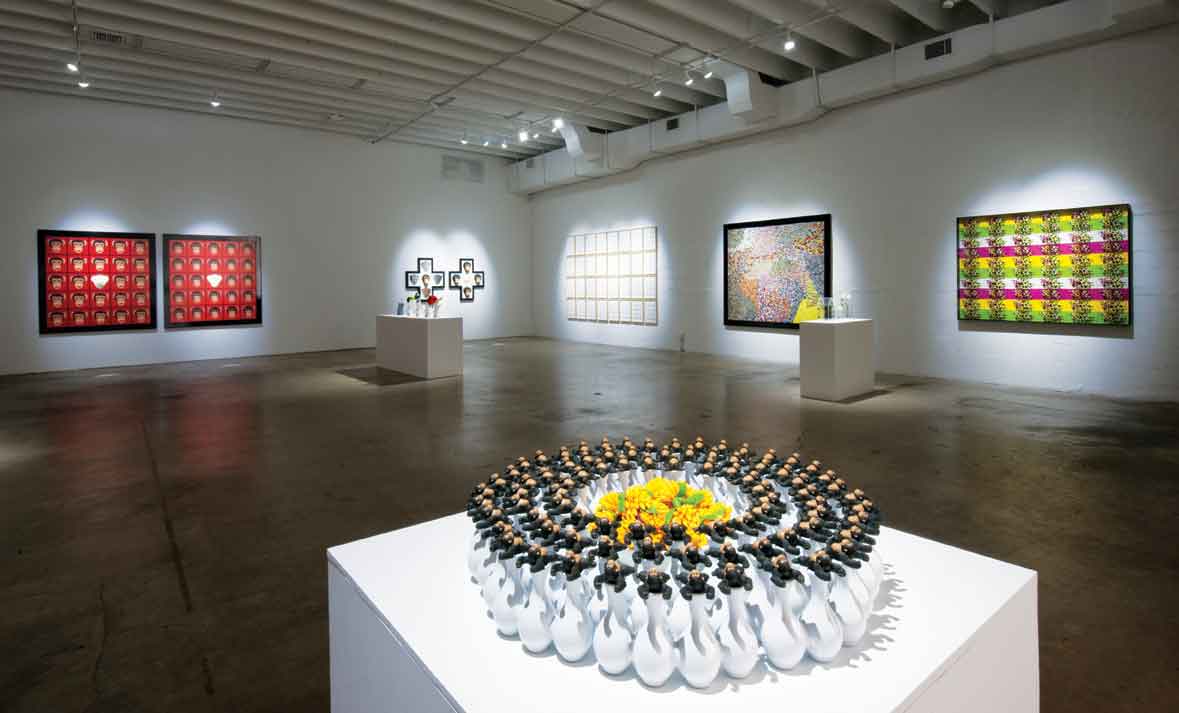« Reviews
Nelson Leirner: What’sWhat and Who’sWho?
Now Contemporary Art - Miami
By Irina Leyva-Pérez
Whenever we think about sarcasm from a political viewpoint in contemporary art, one of the names that immediately comes up is Nelson Leirner. He is known for his farcical attitude, especially towards society and the art market. Despite the obvious difficulties that this position has brought to him over the years, he has managed to keep his work fresh and humorous, perhaps due to the way he approaches art and life in general.
His derisive remarks are aiming to comment on the social and political reality of the world and the power relationship established at a social level. You are part of it (2011), is paraphrasing the popular saying “Monkey see, monkey do.” In the four pieces from this series exhibited he uses monkey heads, including silhouettes made out of mirrors. He is anticipating the moment when the spectator is in front of the piece and can see his or her own reflection. Leirner is talking about the collective guilt and how we become part of something by simply doing nothing against it.
He criticizes the art market primarily in his Sotheby‘s series (2001), making the pieces with the actual covers of the catalogues highlighting elements such as money signs or luxury in general. As we all know, the auction house symbolizes the supremacy of the trade by becoming the guide that collectors follow to establish art values.
Disposable Objects (2009) is perhaps the most intimate work in the exhibition-made after an actual piece of furniture that belonged to the artist. We can see objects he has collected, things that have attracted his attention such as museum store souvenirs. The piece becomes a sort of curio cabinet were we can see private fragments of his domestic environment.
He is also taking advantage of the postmodern appropriation to pay homage to his favorite artists, making his own interpretations of iconic pieces by artists such as Piet Mondrian and Marcel Duchamp. Parking Lot (2011) is his homage to Mondrian, replicating one of his iconic compositions made out of toy cars. The reference to Duchamp comes up in three pieces; 1974 Harvest, made out after his well-known Bottle; R.Mutt, citing the Mona Lisa and Fountain at the same time; and finally Smile (2011), which quotes his famous Bicycle Wheel.
One of his most famous series is Right You Are When You Think You Are (2003/2011). In this one we can see maps, which are at first glimpse playful renderings of a geographical space, made up by children’s stickers. Soon after, we realize that this seemly innocent image is a carefully constructed one, full of political and social references, according to what he sees as identifying circumstances.
Throughout Leirner’s career, his playful and ironic attitude has provoked mixed reactions from the public and the critics. We can see how his work has substantially evolved from that bold move in 1967, when he offered all his pieces for free. Nevertheless, the essence is the same, and his oeuvre continues showing that distinctive social commentary, evident in this exhibition.
(November 12 - December 31, 2011)
Filed Under: Reviews



































